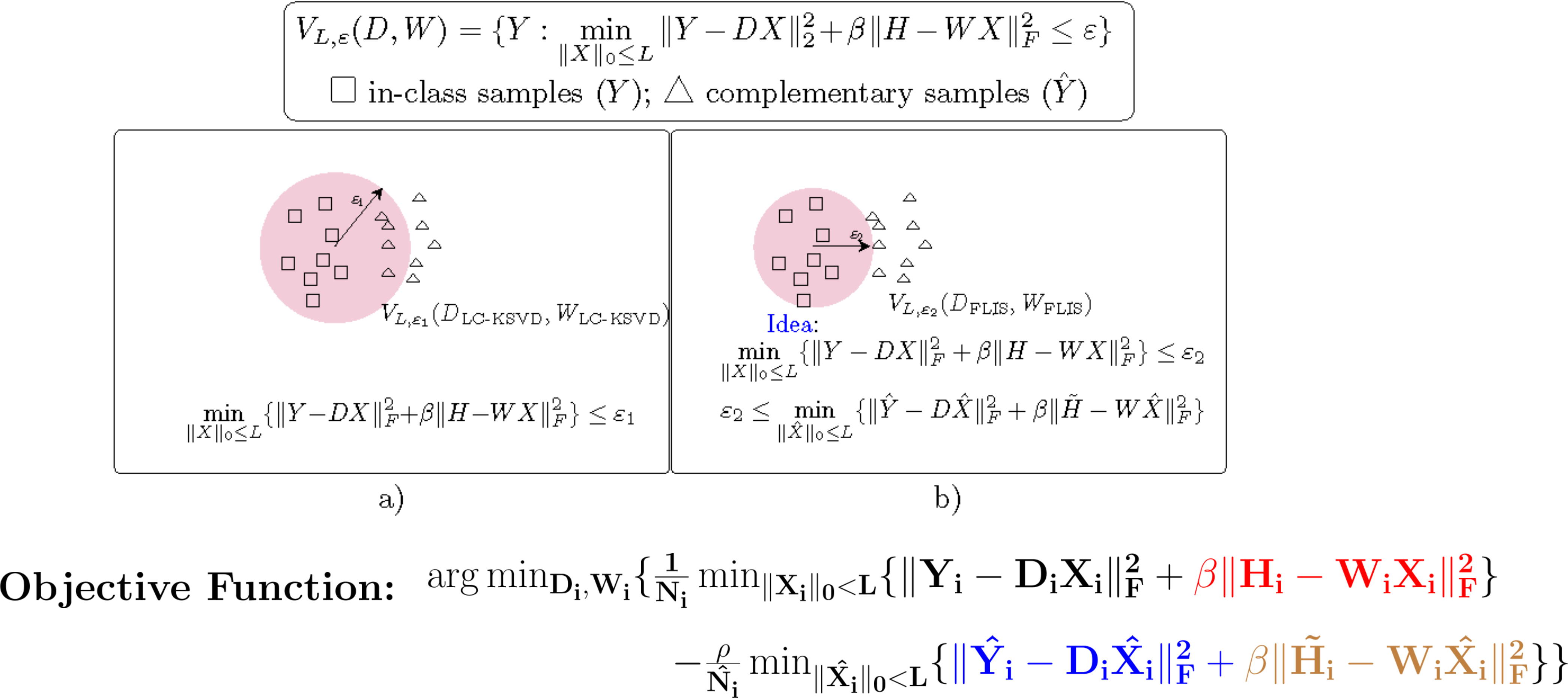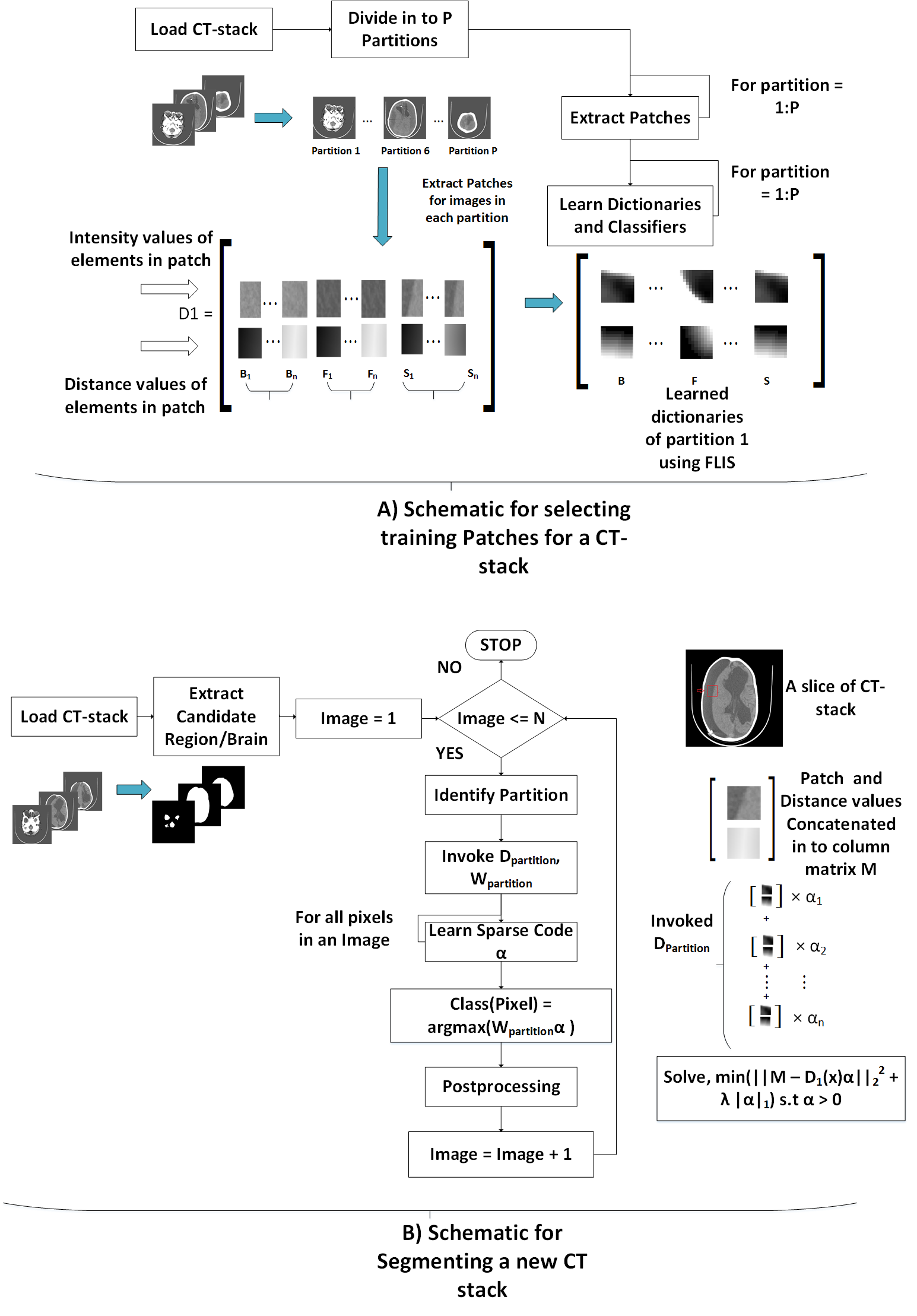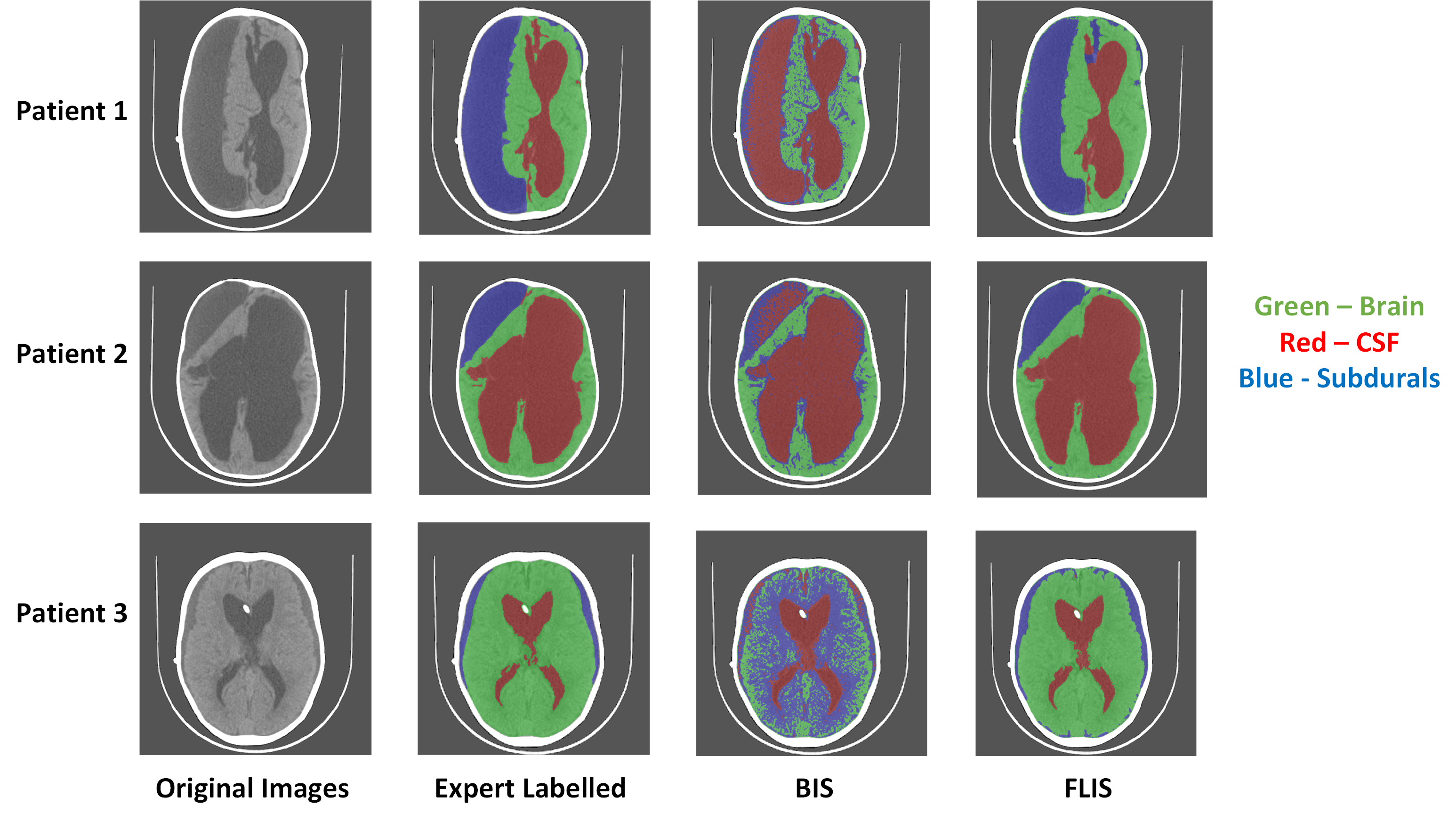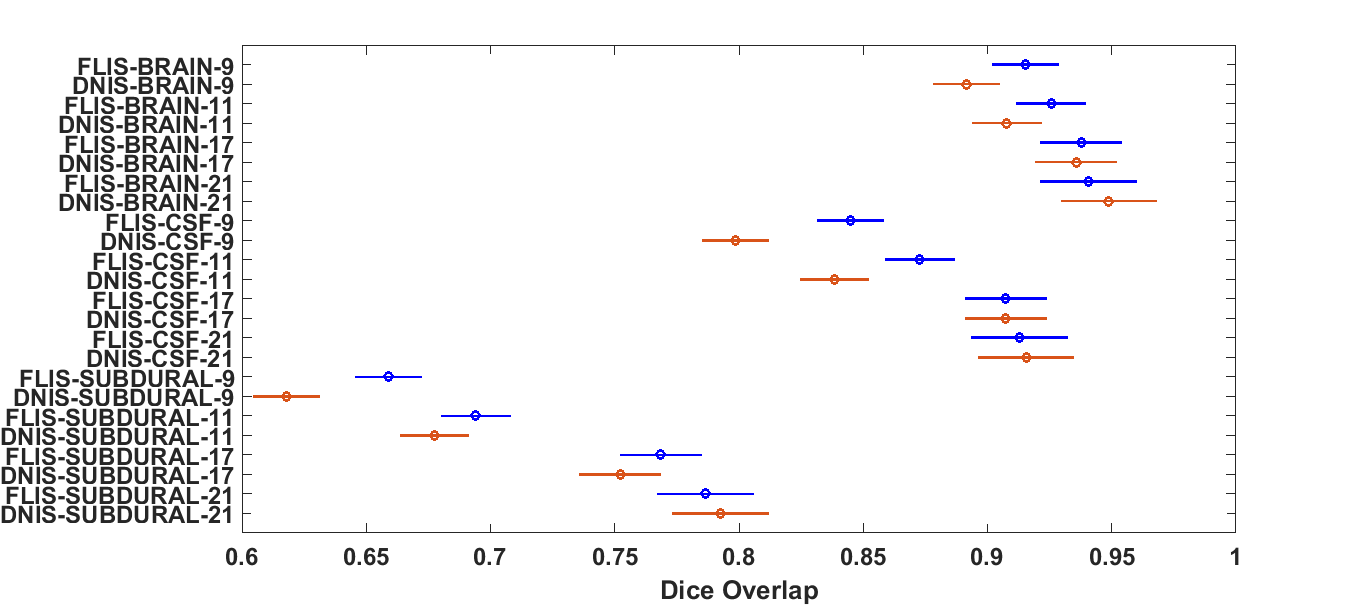Subdural: Challenges

Idea

High Level Illustration

Segmentation Results

Comparison of FLIS with a traditional intensity based segmentation method.
Comparison with Deep Learning Method

Comparison of FLIS with a deep learning method using 3-way ANOVA for different training scenarios.
Related Publications
V. Cherukuri et al., "Learning Based Segmentation of CT Brain Images: Application to Postoperative Hydrocephalic Scans", IEEE Transactions on Biomedical Engineering, volume 65, issue 8, pages 1871-1884, August 2018. (IEEE Xplore)
V. Cherukuri et al., "Learning based image segmentation of post-operative CT-images: A hydrocephalus case study." Neural Engineering (NER), 2017 8th International IEEE/EMBS Conference on. IEEE, 2017, Student Paper Finalist. (IEEE Xplore)
Selected References
A. Makropoulos et al., “Automatic whole brain MRI segmentation of the developing neonatal brain,” IEEE Transactions on Medical Imaging, vol. 33, no. 9, 9 2014.
L. Wang et al., “Integration of sparse multi-modality representation and anatomical constraint for isointense infant brain MR image segmentation,” NeuroImage, vol. 89, pp. 152–164, 2014.
T. Tong et al., “Segmentation of MR images via discriminative dictionary learning and sparse coding: Application to hippocampus labeling,” NeuroImage, vol. 76, pp. 11–23, 2013.
P. Moeskops et al., “Automatic segmentation of MR brain images with a convolutional neural network,” IEEE transactions on medical imaging, vol. 35, no. 5, pp. 1252–1261, 2016.